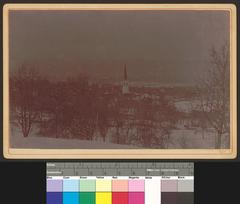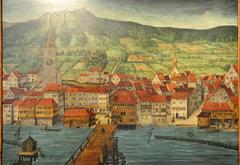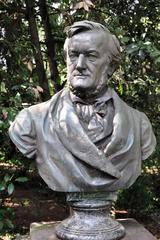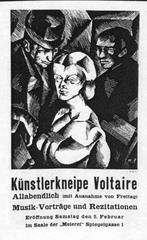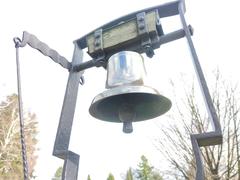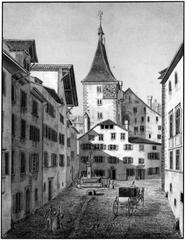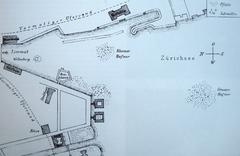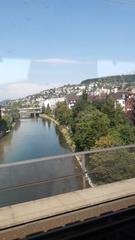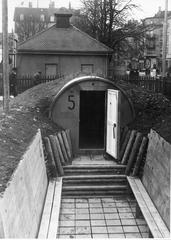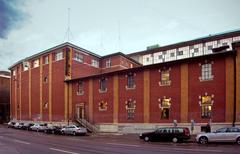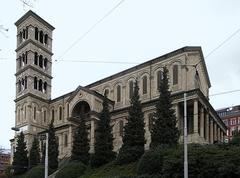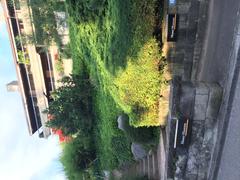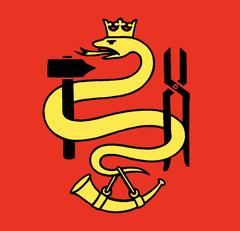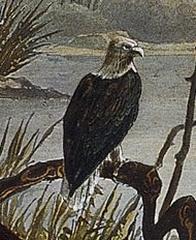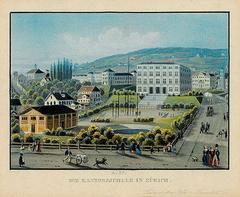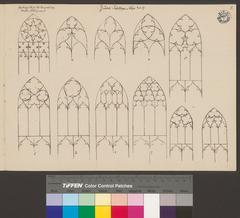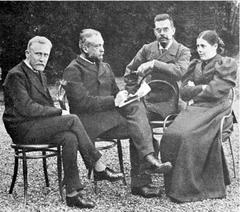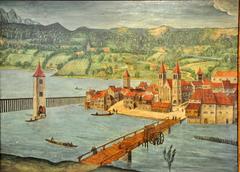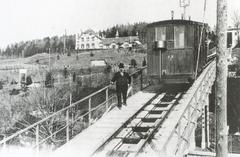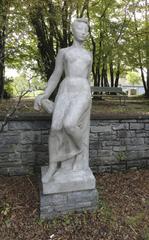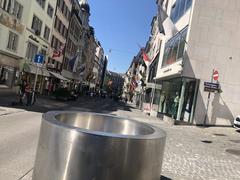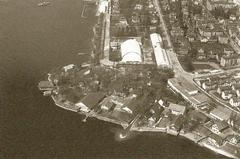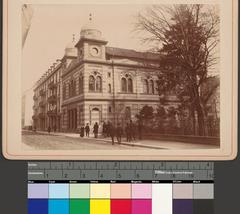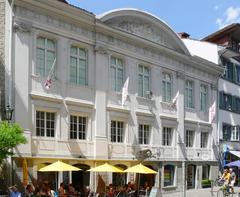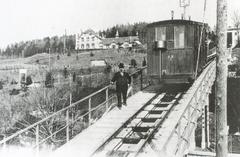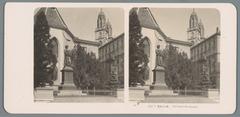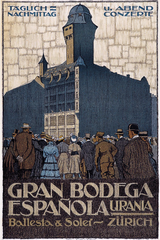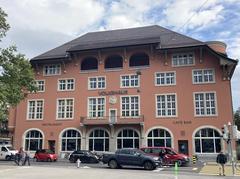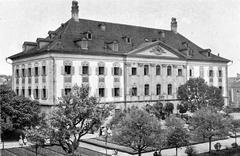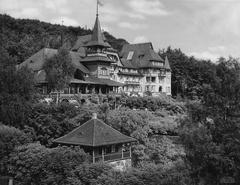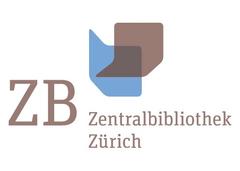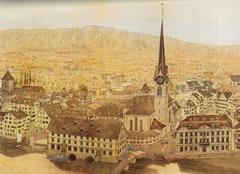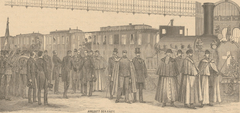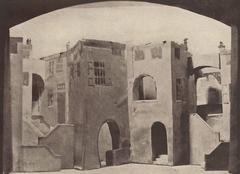Visiting the Palaeontological Museum of the University of Zurich: Hours, Tickets, and Travel Tips
Date: 04/07/2025
Introduction
The Palaeontological Museum of the University of Zurich, now part of the Natural History Museum of the University of Zurich (NMZ), is a leading destination for anyone fascinated by Earth’s ancient history. Located in the heart of Zurich, this institution offers an unparalleled journey through millions of years, showcasing world-class fossils from Switzerland and beyond. With its roots dating back to the early 19th century, the museum has evolved into a modern center for discovery, research, and public education. Visitors can explore fossil treasures from the UNESCO World Heritage Site Monte San Giorgio, view iconic specimens like the world’s largest Ichthyosaurus, and enjoy a wealth of interactive exhibits and family-friendly programming. Whether you are a fossil enthusiast, a student, or a traveler, the museum promises an enriching and accessible experience. For up-to-date information on hours, tickets, and exhibitions, consult the Natural History Museum of the University of Zurich, PIMUZ Visitor Information, and myswitzerland.com.
Table of Contents
- About the Museum
- Historical Overview
- Planning Your Visit
- Exhibition Highlights
- Educational Programs and Public Outreach
- Visitor FAQs
- Travel Tips and Accessibility
- Contact Information
- Summary and Final Tips
- References
About the Museum
Situated on the University of Zurich campus, the Palaeontological Museum (PIMUZ) forms part of the newly integrated Natural History Museum of the University of Zurich. It features one of Europe’s most significant fossil collections, with specimens spanning from the Middle Triassic marine reptiles of Monte San Giorgio to rare dinosaur skeletons, fossil plants, and invertebrates from the Swiss Alps and Jura. The museum’s interdisciplinary approach—unifying paleontology, zoology, botany, anthropology, and mineralogy—makes it a hub for scientific research and public engagement.
Historical Overview
Founding and Development
The museum’s foundation traces back to the 19th century, shortly after the University of Zurich was established in 1833. Early collections were spearheaded by Swiss scientists like Oswald Heer, whose work on fossil plants and insects brought Zurich acclaim in the paleontological world (Springer Link). Over time, contributions by Alphonse Jeannet, Louis Agassiz, and others expanded the collections to include vertebrates, invertebrates, and plants from across Switzerland and internationally.
Integration into the NMZ
A milestone was reached in March 2024 when the university’s four natural sciences museums merged into the NMZ on Karl-Schmid-Strasse (UZH News). This integration brought over a million objects under one roof, allowing for interdisciplinary exhibitions and an enhanced visitor experience.
Planning Your Visit
Location & Getting There
- Address: Karl Schmid-Strasse 4, 8006 Zürich
- Public Transport: Trams 6, 9, and 10 to ETH Zentrum/Universitätsspital; Trams 5, 6 to Platte; Trams 5, 9 to Kantonsschule; Polybahn funicular from Central (switzerlanding.com).
- Parking: Limited at Parking USZ Süd; public transport recommended.
Opening Hours
- Tuesday to Sunday: 10:00 AM – 5:00 PM
- Closed: Mondays and public holidays
- Please check the official website for updates.
Admission & Tickets
- General Admission: Free for all visitors; no ticket required.
- Group Visits & Guided Tours: Available by appointment; advance booking recommended for groups and schools.
Exhibition Highlights
- Monte San Giorgio Fossils: Exquisite marine reptiles, fish, and invertebrates from a UNESCO World Heritage site, dating back 230–240 million years (myswitzerland.com).
- Iconic Specimens: The world’s largest and most complete Ichthyosaurus fossil, rare Triassic fish, and dinosaur skeletons such as Plateosaurus.
- Regional Collections: Fossils from the Swiss Jura, Zurich area, and the Alps, including Jurassic ammonites, belemnites, and Alpine plants.
- International Collections: Select North American fossils and the Santiago Roth Collection—South American Pleistocene megafauna.
- Interactive Displays: Multimedia presentations, hands-on fossil replicas, dioramas, and touchscreens explaining evolutionary history and fossilization.
Educational Programs and Public Outreach
The museum is committed to making science accessible:
- University Training: Offers hands-on research opportunities for students.
- Public Programs: Interactive exhibitions, family workshops, lectures, and special events throughout the year.
- Multilingual Resources: Exhibition texts primarily in German, with English materials and digital guides available. Guided tours in multiple languages can be booked (whichmuseum.com).
- Digital Resources: High-resolution images, educational videos, and virtual tours on the museum website.
Visitor FAQs
Is admission free?
Yes, admission is free for everyone; no tickets required.
What are the museum’s hours?
Open Tuesday to Sunday, 10:00 AM – 5:00 PM. Closed on Mondays and public holidays.
Are guided tours available?
Yes, guided tours are offered for groups and schools; book in advance.
Is the museum wheelchair accessible?
Yes, with elevators and ramps throughout.
Can I take photos?
Photography without flash and tripods is permitted.
Are exhibits suitable for children?
Absolutely! The museum features interactive and engaging displays for younger visitors.
Are there nearby attractions?
Yes, the museum is close to Zurich’s Old Town, Kunsthaus Zurich, the Swiss National Museum, and the university district’s cultural sites.
Travel Tips and Accessibility
- Combine your visit: Pair the Palaeontological Museum with the adjacent Zoological Museum for a full natural history experience.
- Language tip: Most texts are in German—bring a translation app if needed.
- Best visiting times: Weekday mornings are quieter.
- Facilities: Restrooms, cloakrooms, and a small gift shop are on-site; no café, but many dining options nearby.
Contact Information
- Address: Karl Schmid-Strasse 4, 8006 Zürich, Switzerland
- Phone: +41 (0)44 634 38 38
- Website: pim.uzh.ch
- Email: [email protected]
Summary and Final Tips
The Palaeontological Museum of the University of Zurich stands as a testament to Switzerland’s paleontological heritage and scientific innovation. Its exceptional fossil collections—from world-famous marine reptiles of Monte San Giorgio to rare dinosaur skeletons and plant fossils—make it a must-visit for anyone interested in the story of life on Earth. With free admission, accessible location, and a commitment to education and inclusivity, the museum offers an enriching experience for visitors of all ages. Enhance your visit with the Audiala app for curated audio guides and stay informed about exhibitions and events by following the museum’s digital channels. Plan your journey today and immerse yourself in the wonders of Zurich’s natural history (Natural History Museum of the University of Zurich, PIMUZ Visitor Information, myswitzerland.com).
References
- This is a sample text. (Natural History Museum of the University of Zurich)
- This is a sample text. (PIMUZ Visitor Information)
- This is a sample text. (myswitzerland.com)
- This is a sample text. (whichmuseum.com)
- This is a sample text. (Springer Link)
- This is a sample text. (UZH News)
- This is a sample text. (switzerlanding.com)
- This is a sample text. (zm.uzh.ch)
